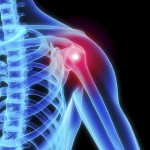Brian Schiff’s Blog
Injury Prevention, Sports Rehab & Performance Training Expert
I rehab far too many athletes under the age of 18 with ACL tears. In many cases, I am rehabbing some who have suffered multiple ACL ruptures before they graduate from high school. The burning question is why do so many clients suffer a graft failure or contralateral injury so so often?
Is it related to genetics? Is sports specialization to blame? Perhaps fatigue and limited recovery is a problem. I think the answer is multifactorial, but to be perfectly honest we as a profession have yet to truly arrive at a consensus as to when the “right time” to return to play is. Opinions vary widely based on the athlete, sport, native movement patterns, graft choice, additional injuries (ligament, cartilage or soft tissue) and the provider.
As a clinician dedicated to both prevention and the best rehab, I am always re-evlauating my own algorithm and rehab techniques, while looking for scientific rationale to direct my exercise selection and decision making processes. A recent paper by Webster and Feller in the November 2016 edition of AJSM looked at subsequent ACL injuries in subjects who underwent their primary ACLR under the age of 20 utilizing a hamstring autograft reconstruction procedure.
I work with a lot of baseball players in my clinic. In many cases, I see similar issues and recurring problems in them, especially pitchers. Some of these issues include:
- Scapular dyskinesia
- Limited thoracic spine mobility (extension and/or rotation)
- Soft tissue tightness (lats, post shoulder, pec major/minor)
- Poor muscular strength/endurance in the rotator cuff and scapular stabilizers
- Glenohumeral internal rotation deficit (GIRD)
I integrate routine mobility exercises for my throwers, as well as other overhead athletes (tennis, swimming, volleyball, etc) to better prepare them for training and their sport, as well as prevent poor mechanics and compensatory motion that may lead to aberrant stress on the rotator cuff and labrum.
The following video reveals five of my preferred exercises using a foam roller to improve thoracic spine mobility, decrease latissimus tightness, and stretch the pec major/minor while facilitating lower trapezius activation.
In order you will see:
- Lat rolling
- T-spine extension in supine
- T-spine extension coupled with lat stretch
- T-spine rotation
- Retraction and downward rotation
I advise performing 5-10 repetitions of each prior to training and sport. These will help improve performance, optimize overhead mechanics and reduce injury risk associated with overhead sports.
Many of my clients need to improve shoulder and pillar stability. Combating poor glenohumeral and scapular stability and insufficient trunk stability is a must to reduce injury risk, resolve shoulder and back pain and eliminate compensatory motion with exercise, sport and life.
The following two exercises are “go to” ones I utilize to do just this.
The links above are for two recent exercise columns I authored for PFP Magazine. These exercises include load bearing using the client’s bodyweight and include progressions and regressions.
It is no secret that elbow injuries have been on the rise in MLB as well as all levels of baseball. I see far too many adolescent baseball pitchers in my clinic with medial elbow pain. Often it is related to pathological GIRD and proximal imbalances in the shoulder complex.
Researchers have been studying biomechanics for years. It has long been a belief that younger pitchers should focus on fastballs and change-ups, while minimizing curveballs. Currently, the prevailing thought and latest evidence seems to suggest that velocity may be the bigger risk factor or determining factor in leading to UCL injuries.
A paper in the August 2016 edition of the American Journal of Sports Medicine from Rush University Medical Center sought to determine factors associated UCLR among MLB pitchers. The hypothesis was that those pitchers who underwent UCLR would have a higher pre injury pitch velocity.
This retrospective case controlled study looked at data for pitch velocity, type and number for every pitcher and game were gathered from the PitchFx database from April 2, 2007 to April 15, 2015. Data from 2013 – 2015 was excluded to avoid lead in time bias, as pitches in these seasons may contribute to injuries in pitchers who have not yet undergone UCLR. Pitchers were classified as control, pre injury or postoperative.
Improving lateral chain strength is always a priority when training or rehabbing athletes. Improving anti-rotation stability is particularly important for injury prevention and dissipation of forces in the transverse plane. Whether working with a post-op ACL client or training an overhead athlete, I am always seeking ways to increase torso/pillar stability to increase efficiency of movement and reduce injury risk.
This video below from my Functionally Fit series for PFP Magazine will demonstrate a great exercise do accomplish these training goals.
Emphasis should always be placed on maintaining alignment. Do not progress the load too quickly, and be cautious if using the fully extended down arm position if clients have a history of shoulder instability or active shoulder pathology as this places more stress on the glenohumeral joint. Below are some progressions and regressions as well:
Regressions
1. Decrease the hold time as needed to maintain form and alignment
2. Allow the kettlebell to rest against the right dorsal wrist/forearm
3. Stack the top foot in front of the other foot as opposed to stacking them on top of one another to increase stability
4. Bend the knees to 90 degrees to reduce the body’s lever arm
Progressions
1. Increase the weight of the kettlebell and/or increase hold time
2. Lift the top leg away from the down leg
3. Add light perturbations to the top arm during the exercise to disrupt balance and challenge stability
4. Perform the exercise with the down arm fully extended





